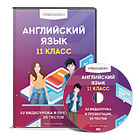Тип урока: обобщающее повторение темы «Мир животных».
Ход урока:
I. Организационный момент.
- Какие виды домашних животных вы знаете? (предполагаемые ответы: кошки, собаки, козы, лошади…)
- Какие виды диких животных вы знаете? (предполагаемые ответы: тигр, лев, слон…)
Сообщение цели и темы урока.
Сегодня мы повторим лексику, поговорим о животных, выполним небольшой тест по грамматике, и вы предоставите свои первые мини проектные работы по теме «Животный мир».
II. На этой земле мы не единственные жители и живем в мире полной красоты, и животные являются частью естественной природы. На уроке мы с вами узнали много интересных фактов о жизни животных, об отношении людей к ним.
Дома вы прочитали текст об особенностях животных и должны сейчас дополнить предложения, используя слова взятые из него. Слайд №2.
Сейчас надо выйти к доске и исправить предложения, если это необходимо Слайд №3.
А теперь попрактикуемся в чтении и догадаемся, о каком животном идет речь Слайд №4. Дети читают и отвечают.
Будьте внимательны, мы переходим к лексико - грамматическому тесту. Слайды №5 - 8. Проверка выполнения заданий.
Перейдем к вашим домашним заготовкам, т. е. мини проектам. Происходит демонстрация и обсуждение слайдов № 9 - 18 , составленных детьми на уроках информатики.
III. Рефлексия: Слайд № 19 Ребята, прочитайте и переведите вопросы, и назовите животных обладающими свойствами затронутыми в вопросах. Ребята называют умения, размеры, способности зверей.
IV. Подведение итогов урока.
Normal 0 false false false RU X - NONE X - NONE /* Style Definitions */ table. MsoNormalTable {mso - style - name:"Обычная таблица"; mso - tstyle - rowband - size:0; mso - tstyle - colband - size:0; mso - style - noshow:yes; mso - style - priority:99; mso - style - qformat:yes; mso - style - parent:""; mso - padding - alt:0cm 5. 4pt 0cm 5. 4pt; mso - para - margin:0cm; mso - para - margin - bottom:. 0001pt; mso - pagination:widow - orphan; font - size:10. 0pt; font - family:"Calibri", "sans - serif";}
1 ) Complete the sentences:
— Our planet in home to a vast collection of (animals).
— Some animals have (fur) or (feathers), many have no hard (body) parts at all.
— Animals often have (eyes), (ears) and (legs).
— Animals’ bodies are made of lots of (cells).
— Animals have also (muscles) and (nerves).
— Now many animals are in (danger). We must look often the (animals).
2) Correct the sentences:
— The grey wolf is the largest member of the bear family. (dog)
— Life in desert does not look lifeless. (looks)
— Most of the animals hide, because it’s raining during the day. (hot)
— The trees in the tropical forest are not green. (always)
— It never rains in the tropical forest. (often)
— It’s very cold in the tropical forest and most animals live into the holes. (cool, trees)
3) What is this animal?
— They live in water, but they are not fish. They have warm blood and they breathe air through a hole in the top of their head. (whale)
— They live in Africa and India. Hunters have been killing them for meat and their ivory tusks for a long time. They are very big animals. (elephant)
— This animal bounds along on its enormous back legs, using its strong tail to help it balance. This animal lives only in Australia. (kangaroo)
4) Grammar warming up
— The fox ______ beautiful tail. (have, has, to have, to has)
— The panda bear ______ in China. (live, lives, to live)
— The polar bear ______ the cold air. (like, likes, to like)
— Tigers ______ in India. (live, lives, to live)
— The elephant is ______ largest of all land animals. (a, an, the)
— The zebra likes lo live in ______ hills. (a, an, the)
— The giraffe ______ a very long neck and a long tongue. (has, have)
— The kangaroo ______ a long tail. (have, has, to have, to has)
— The crocodiles can ______ very well. (walk, walks, to walk)
— The crocodiles ______ for hundreds of years. (live, lives, to live)
— The dolphin lives in ______ warm waters. (a, an, - )
— The whale ______ no teeth (have, has, to have, to has)
— Dolphins ______ 50 years. (live, lives, to live)
— Parrots live in ______ forest of South America. (a, an, the)
— Parrots eat ______ fruit and nuts. (a, an, - )
— Lions ______ in Asia and Africa. (live, lives, to live)
— The leopard ______ from about 12 hours a day. (sleep, sleeps, to sleep)
— The whale ______ no neck (have, has, to have, to has)
5) What animal is …?
— can you see in a zoo? __________________
— can run very fast?_____________________
— are very small? _______________________
— can swim? __________________________
— are very big? ________________________
6) The pupil’s projects

 Получите свидетельство
Получите свидетельство Вход
Вход












 Урок английского языка "World of the animals" (22.32 КB)
Урок английского языка "World of the animals" (22.32 КB)
 0
0 411
411 32
32 Нравится
0
Нравится
0


